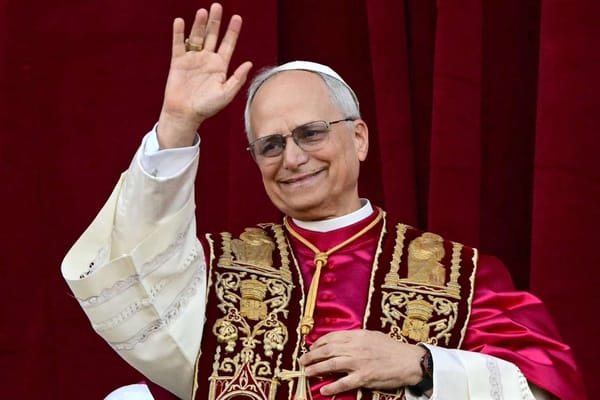Jesus’ Priestly Blessing in The Chosen


The Chosen, season 3, episode 1, shows Jesus allowing his apostles and close disciples to take a break from their grueling ministry and rest for some weeks or months, spending time with their families. Before dismissing them, Jesus gathers them close to him and blesses them with the traditional priestly benediction:
May the Lord bless you and protect you;
May the Lord show you kindness and be gracious to you;
May the Lord bestow favor upon you and grant you peace;
May this be God’s will
Amen
This beautiful prayer comes from the Torah, Numbers 6:24-26, and it is called the Priestly Blessing (Birkat Kohanim in Hebrew), sometimes also called the threefold blessing. It is an ancient benediction that was recited by the priests (kohanim) in the holy temple in Jerusalem. According to the Torah, Aaron blessed the people, and YHWH promises that "They (the Priests) will place my name on the Children of Israel (the Priests will bless the people), and I will bless them." The Chazal stressed that although the priests are the ones carrying out the blessing, it is not them or the ceremonial practice of raising their hands that results in the blessing, but rather it is God's desire that the kohanim's hands should symbolize the blessing. In ancient times, the priests recited the blessing twice each day.
Only Kohamim, which were decedents of Aaron, could pray the blessing. Jesus was not a Levite, he was from the tribe of Judah, so technically, Jesus was not allowed to say this blessing. But perhaps, the creators of The Chosen took artistic license since as the Christ, he was king, prophet, and priest. He was a priest like Melchizedek (his position as priest did not depend on his parents or his genealogy), and was above Levites.
As I mentioned, the blessing was traditionally recited by the kohanim, the descendants of Moses’ brother Aaron, who served as priests in the temple. The common procedure was for the Levites, the descendants of the tribe of Levi who served as assistants in the temple, to wash the hands of the Kohanim, who then removed their shoes and stood before the ark. At the appropriate point in the service, the prayer leader will call out “kohanim.” The kohanim then cover their heads with their prayer shawls, arrange their fingers in a pattern made famous as a Vulcan greeting by the Jewish actor Leonard Nimoy in Star Trek, and recite an introductory blessing. The leader then calls out each word of the blessing one by one and the kohanim repeat it.
Even after the destruction of the second Hebrew Temple in Jerusalem, the practice has been continued in Jewish synagogues, and today, in most Jewish communities, kohanim bless the worshippers in the synagogue during special Jewish prayer services. On holidays like Rosh Hashanah and Yom Kippur, members of synagogues who are part of the priestly class recite the blessing for the congregation. Some synagogues give this blessing during each Shabbat. Members of the clergy also give the blessing to children during a Bat Mitzvah or Bar Mitzvah. The text of the Priestly Blessing is also used by Jewish parents to bless their children on Friday night before the Shabbat meal.
<




